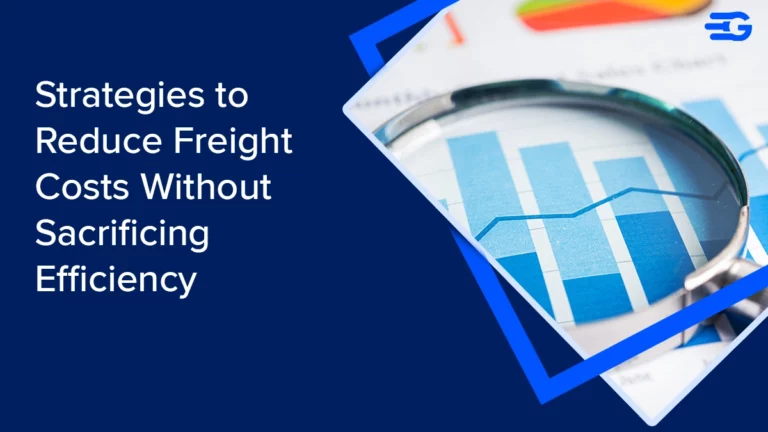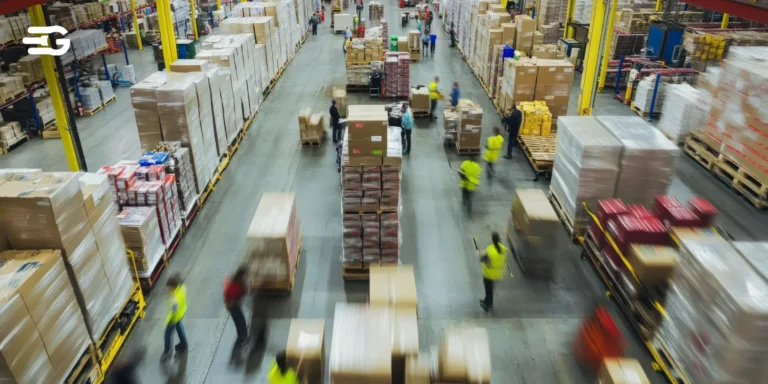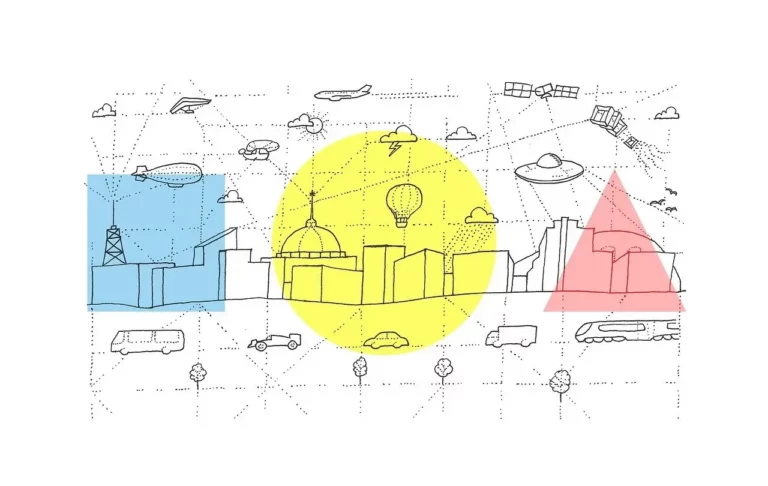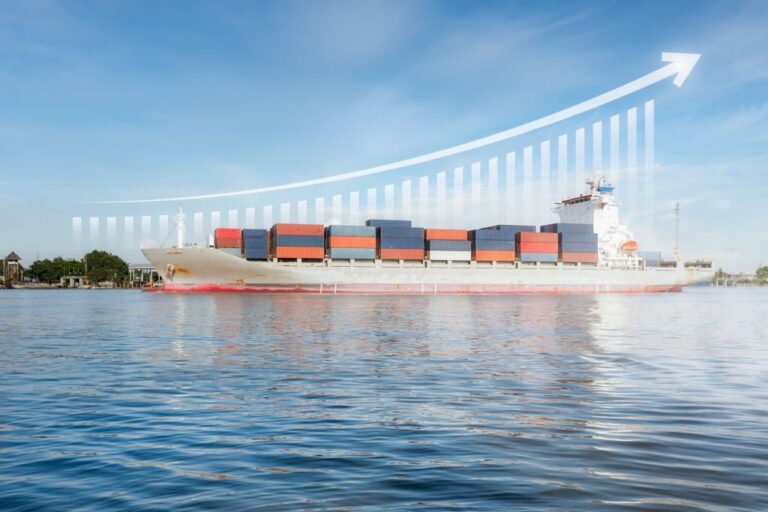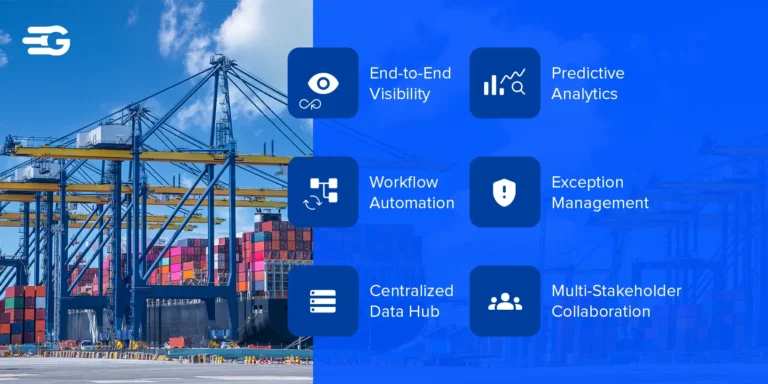Why Legacy TMS Tools Struggle with Modern Freight Complexities
Freights used to follow a rhythm. Schedules were stable, routes stayed fixed, and minor delays rarely disrupted the bigger picture. But that rhythm is long gone. Now, a strike at one port, a storm halfway across the globe, or a sudden price spike can ripple across the entire supply chain within hours.
In the middle of this shift, most logistics teams are still running on Transport Management Systems (TMS), which were built for predictability, not volatility. Legacy TMS limitations make it impossible to think in real time or respond when the ground shifts. The question is no longer whether these tools fall short, but how much it’s costing you to keep using them. Let’s look closer.
The Problem with Legacy TMS Tools
Freight has changed. What used to be predictable is now volatile. Customers expect speed. Ports get clogged. Prices fluctuate mid-route. And yet, many companies still rely on TMS tools built for a slower, simpler world.
These tools were fine when supply chains moved on fixed schedules. Today, they feel more like a bottleneck. We will discuss five core areas where legacy TMS limitations become operational roadblocks.
- Static and Rule-Based Logic
Traditional TMS tools follow predefined rules. Set routes. Fixed rate tables. Limited conditions. They don’t evaluate what’s happening right now. They respond based on what was true when the workflow was created.
In a dynamic environment where delays, detours, and exceptions are the norm, static logic becomes a problem. There’s no flexibility. The tool doesn’t adjust. It just follows the same path, regardless of what’s changed outside.
- Slow to Adapt to Disruptions
Disruptions are no longer rare events. They are part of the daily workflow. Legacy TMS limitations prevent teams from reacting quickly when disruptions occur.
If a shipment is delayed, the system waits for someone to intervene. There are no early warnings. No automated fallback options. Legacy TMS limitations delay issue detection, so by the time you find out, it’s already too late.
This slow reaction time affects the entire chain. One hold-up ripples across downstream operations, and the TMS tool offers no real help in staying ahead of it.
- Limited Real-Time Tracking
One of the most visible legacy TMS limitations is outdated tracking that lacks real-time accuracy. The updates are delayed, fragmented, or dependent on manual inputs. There’s no granular visibility, no dynamic ETAs, and no real-time milestone tracking.
Only 25% of suppliers use real-time shipping trackers, even though 73% of supply chain professionals now consider real-time visibility a must-have. The gap between expectation and implementation is still wide.
One of the clearest examples of the difference real-time visibility can make comes from Polymers International. Before switching to GoComet, the company struggled to keep customers informed about delivery timelines due to outdated shipment tracking processes.
After automating shipment visibility, they saw a significant improvement in internal efficiency and an 80% reduction in customer queries, simply by knowing where freight was, and when it would arrive
- Poor Integration with Modern Data Sources
Modern freight operations rely on clean, connected data. Carrier APIs, IoT signals, port updates, ERP syncs. It all matters. Among the major legacy TMS limitations is poor integration with modern data sources like APIs and IoT feeds.
Connecting a new API can be a long development process. Getting data out of the system is just as frustrating. This lack of integration creates blind spots. The data exists, but legacy TMS limitations prevent systems from making use of it in real time.
- Manual-Heavy Workflows
Older TMS tools depend too much on manual intervention.
- Booking a shipment
- Updating a delay
- Sending a status alert
- Generating reports
You can see: legacy TMS limitations result in repetitive manual tasks that don’t scale.
When volume scales up, so does the time and cost of those manual steps. Mistakes creep in. Teams get stretched. Processes slow down. Legacy TMS limitations start compounding as freight volume scales.
What Modern Freight Requires
As we saw in the last section, you can’t run modern freight with tools built for static flows. You need systems that understand context and remove decision friction wherever possible.
- Predictive Analytics Instead of Passive Reporting
Modern TMS tools need to think forward. That means recognizing when a lane is prone to delay, when a port is under strain, or when a storm three days away might push arrival times. None of this can be left to gut feeling.
Predictive systems help companies prepare before disruption hits. The earlier the signal, the better the decision. Legacy tools tend to report too late, after the impact has already landed.
- Complete Multi-Modal Visibility
Shipments rarely stay in one mode from start to finish. A single order might touch rail, road, ocean, and air in the same journey. If your system only sees one leg of that, you’re managing blind.
Modern freight needs end-to-end visibility. Not partial. Not delayed. Every node, every handoff, every possible delay point. And it needs to be unified in one view, not scattered across different platforms.
TMS tools that can’t offer this kind of multi-modal visibility limit the operator’s ability to respond with clarity and speed.
- Live Alerts and Shifting ETAs
Conditions change fast. Your system needs to know all changes, and it needs to surface them immediately. Static ETAs create false confidence. Teams plan around numbers that don’t reflect reality. By the time someone checks manually, the situation has already shifted.
Overcoming legacy TMS limitations means implementing dynamic ETAs that reflect live conditions. Along with alerts that trigger when thresholds are crossed. Not after the fact, but while there’s still time to act.
- Incident Identification and Escalation
Disruptions are everywhere. But not all of them need the same attention.
Modern freight operations need systems that can identify which delays require action and which don’t. A one-day delay for a non-priority shipment is noise. A four-hour delay for a high-value client order is a problem.
To move past legacy TMS limitations, systems need to act like intelligent filters, not just passive logs. Help the right people see the right problems, not just add more noise to an already overwhelmed workflow.
- Automation Where It Actually Matters
The more complex the freight operation, the more important it is to reduce unnecessary manual work. Booking shipments, sending documents, updating statuses, requesting quotes. These are not strategic tasks. These are exactly the kind of issues created by legacy TMS limitations: slower processes and more mistakes.
Modern TMS tools must be able to handle these processes in the background. Not because it’s flashy, but because it’s necessary. When the system takes care of the routine, people can focus on the exceptions.
Enter AI-Powered TMS: GoComet’s Advantage
At this point, the legacy TMS limitations are increasingly exposed as freight systems modernize. Legacy TMS limitations stem from a design built for routine, not for volatility or unpredictability. They depend heavily on human input, cannot interpret real-time signals, and struggle to adapt to changing conditions. That is exactly where modern platforms built around AI start to stand out.
GoComet is built to overcome legacy TMS limitations that no longer fit today’s logistics pace.
This intelligence directly addresses legacy TMS limitations around tracking, escalation, and execution. Here are the core capabilities that define its advantage.
- Predictive ETAs from Live Data: GoComet calculates expected arrival times using a range of real-time inputs. These include carrier performance, weather patterns, and port congestion. The result is a moving estimate that reflects current conditions rather than historical averages.
- Incident Management and Risk Identification: Delays and risks are identified early. GoComet flags shipments that deviate from normal progress and highlights which issues require attention. This helps teams focus on problems before they affect downstream operations.
- Automated Notifications and Stakeholder Updates: Status updates are shared with relevant parties without relying on manual communication. This improves visibility across the organization and reduces coordination delays.
- Cost Visibility and Optimization Tools: Freight spend is tracked, broken down, and analyzed. The platform identifies where savings are possible and where inefficiencies exist in current routing or vendor selection.
If we put it in a line: traditional TMS tools focus on control through predefined rules, but platforms like GoComet respond in real time, learn from ongoing data, and reduce the need for human correction.
| Feature | Legacy TMS Tools | GoComet (AI-Powered TMS) |
| ETA Accuracy | Static, based on past averages | Dynamic, based on real-time data |
| Disruption Handling | Manual intervention required | Automated alerts and escalation |
| Visibility | Limited, single-mode focused | End-to-end, multi-modal coverage |
| Integration | Complex, slow to update | Seamless with carriers, ports, ERPs |
| Automation | Minimal, task-heavy | Smart workflows reduce manual load |
| Cost Insights | Basic reporting | Real-time optimization and benchmarking |
| Communication | Manual updates to stakeholders | Automated, rule-based notifications |
Conclusion: It’s Time to Evolve
Freight operations have changed, but many systems haven’t kept up. When delays, rate fluctuations, and multi-leg movements are part of daily reality, relying on outdated TMS tools becomes less about cost and more about compromise.
Modern platforms like GoComet are designed to reduce that gap. We take what freight requires today (predictive insight, seamless coordination, and fewer manual steps) and make it part of the default setup. If you’re evaluating how your logistics stack can perform better under real-world pressure, explore how GoComet helps you stay ahead in a fast-moving logistics world.

